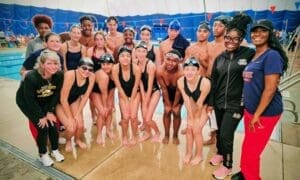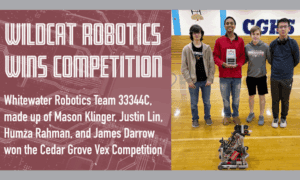If you walk down the “Connections” hallway at Rising Starr Middle, do not be surprised if you see something flying overhead.
Several of Bob Didier’s technology students were assigned to a project where they are learning how to design, program and fly unmanned aerial vehicles, also known as drones. However, the students are not building drones for the sake of building drones, they are researching problems that possibly can be solved by their use.
Two two-student teams of Jonathan Baxter and Nick Brown, both eighth graders, and Ian Fertig and Sean Nima, both seventh graders, worked with Didier, both inside and outside of class, on the project. Didier left it up to the students to identify the critical areas of study needed to complete drone missions. They determined that pilot training, communications, computer/software uses, and logistics, as well as drone abilities and limitations, were the areas they needed to learn in order to make their missions successful.
Using the concepts of STEM (Science, Technology, Engineering, Math) the teams planned missions for load testing, delivery of objects and robotic parts, and search and rescue.
“They had success and failure, but learned in failure that we still learn,” said Didier.
In this project, students actually took control of their learning. Didier gave them the starting point, a drone, and left it up to them to set the parameters for what they needed to learn to attempt successful missions with the drone.
“The whole experience has been very interesting, hard at times, but very interesting and an honor to be part of, “ said eighth grader Jonathan Baxter. “Mr. Didier let us use his resources, equipment, and prior knowledge so we can teach ourselves what we want, and how we want. To get a chance to design my own education and have it contoured to my own strengths and weaknesses in the drone project is huge.”
The students’ work and research has set the stage for Didier to offer a module in his classroom next year on Engineering by Design, using drones as the focal point. Engineering by Design uses STEM concepts in an authentic problem/project-based environment, in this case, the drone. Didier says the ultimate goal of the drone project is to get students excited enough about what they are learning that they want to take it farther than anyone ever expected.
“If you give them a limit, they will meet the limit. If you don’t give them a limit, they will continue far beyond your expectations. Guided education, allowing the students to design their own missions, allows the creative part of themselves to come out, which sometimes is missing in a too structure education system,” Didier said.












Leave a Comment
You must be logged in to post a comment.